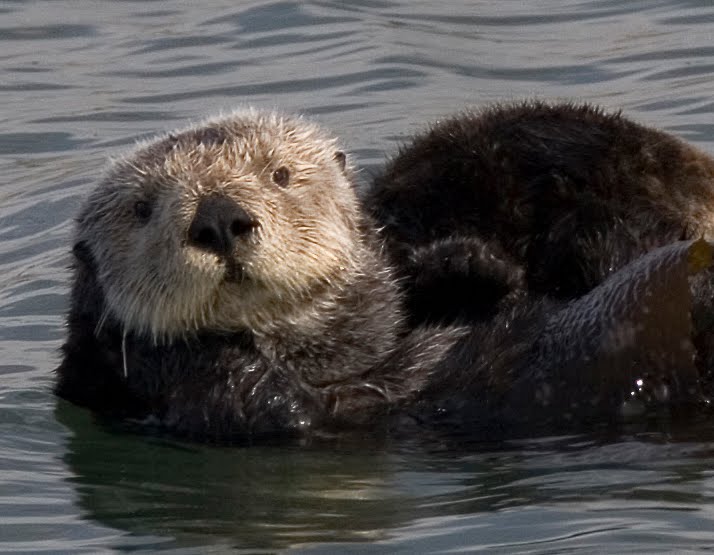BIG SUR EXPEDITION –1895
HENRY HARTWELL RHODES. 1895
Courtesy: Cecil Rhodes
[I have recorded the xerox copies of H. W. Rhodes on my computer disc for safe keeping. This translation was made as near as possible as written with spelling corrected and some punctuation added to make the reading easier. The copies were loaned to me by Virginia (Rhodes) Beard: Franklin Beard, 1985]
[Scan and OCR by Ronald William Rhodes, 2010]
The coast on the Pacific side of North American differs widely in climatic conditions from that of the Atlantic side. The same latitude on the Atlantic coast falls from 15 to 20 degrees lower in temperature than the Pacific. The west side rarely drops to 35% above. This condition is caused by the warm Japan current, which strikes the southern part of Alaska and follows the coast southward to Mexico, where it merges with the Equatorial current and flows westward across the Pacific. The condition of the Pacific coast is balmy and warm throughout the entire year, generating an abundant of Animal life, in the water as well as in the land. Because of this warm condition of the water, is found a specie of seal, found no where else on the globe, while it may be located occasionally in nearby waters, it has been driven there by the relentless search for it, caused by the I demand for it’s fur as it is extremely valuable, and sold at enormously high prices in all the large cities of the world, especially those cities in cold countries. This little animal, is the sea otter. Beautiful glossy black often tipped with silver hair it is as shy as he is beautiful. His average length is about 4 ft.6 in. and weigh about 80 to 100 lbs. They differ from other sea animals of the seal family in their choice of food, for they live exclusively [sic] on mussels clams and sea urchins. Only in the 19th century these, now valuable sea animals, were found even in San Francisco bay, by countless thousands, and were hunted from Alaska to Mexico, by the early Russian seal hunter. The trade first attracted the attention of the Russians in Bering Sea. While hunting the fur seal of [off] the the coast of Alaska they found the native there wearing a much finer fur than they had ever seen, and on bartering for some of these rare skins, found the natives would dispose of them for trinkets of very little value. So the trade in sea otter skins grew until the conquest of California in 1846. As many as 10,000 skins found their way to China Japan and Russia yearly. Sailing vessels from the California coast westward have been known to have found on arriving at their destination that 1/3 of their cargo of skins were rotten owning [owing] to the green state in which they were packed, so eager were they to be the first arrival at the marketing port, but allowing even for this loss, there was a handsome profit for the sealers.
It was without doubt this sea-otter trade, that brought about the Russian settlements on the California coast and which caused such uneasiness among the Spanish Governors in the early days before the Gringo’s came, but much pressure was brought to bear on the Russian commander and after considerable negotiations between the Home Governments the Russians finally disposing of their holdings at Old Fort Ross silently and mysteriously disappeared and from that time, 1840-4, very little hunting was done for many years owning [owing] I suppose to the scarcity of the otter. It seems that the drive on the animal which began in the north drove them southward and bring sorely press along the California coast, they escaped only by turning northward again, which became the great field for fur sealer for many years, in fact up until the law was enacted prohibiting the taking of any fur bearing seal. The fine now on the taking of an otter is $1,000, imagine the enormous benefit that we, as a nation could derive from the fur industry now, if that fine had been imposed 35 or 48 years ago, allowing the increase to accumulate, [accumulate] these many years, instead of letting a greedy unscrupulous non-appreciative group of men almost exterminate this valuable animal from the sea. If only we as a people could or would see the calamity such ruthless slaughter is doing for us with all of natures gifts and fix heavy penalties for breaking the law of conservation, our grand and glorious land of Freedom would stand and flourish until the end.
Large fields of Kelp here and there line the coast near shore, and in this Kelp is the home and breeding place of the otter and being practically unmolested they had increased until they caught the eye of the hunter probably in the late eighties when a few boats put to sea and succeeded in getting from 1 to 3 on a trip. Another factor of great importance to the hunted was the enormous increase in value for otter furs, which, was quoted now all the way from $300-to $550, and an extra fine fur would bring about $800. Now to the boys living along the coast and being good boatman, this sport was tempting, as well as a vacation. I have been here on a former trip with a crew, was invited to spend a summer in this exciting and health restoring cruise, and I excepted [accepted] without a second invitation.
